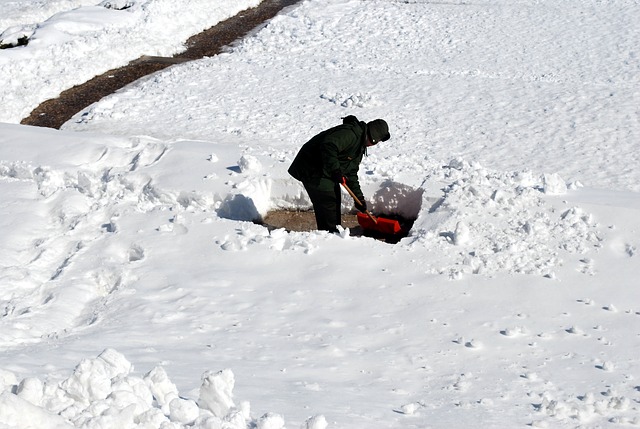
It’s that time of year. Snow storms come in fast and leave us trapped inside. Unless you’re brave enough to face the cold, get out your shovel and clear a path, you’re not going anywhere. Trouble is, most of us don’t have a choice. So when you have to shovel that wet, heavy snow out of your way – keep in mind these tips to avoid straining your back and overworking yourself.
- Be mindful of your body! Shoveling snow frequently leads to back injuries because of the stress it creates on the musculoskeletal system. It also can over work your cardiovascular system, so at any hint of shortness of breath or chest pain – stop shoveling immediately! If symptoms persist, seek medical attention.
- Treat it like a workout. The movements are comparable to weight lifting, and in some cases, the cardio aspect will get your heart pumping too. Don’t eat or smoke beforehand and avoid caffeine as it could cause your heart rate to increase and your blood vessels to constrict. It is also a good idea to stretch and warm up your muscles before you start!
- Pace yourself. Take breaks, stretch, and drink water to avoid dehydration.
- Create traction. If the ground is slippery, spread some salt before you start to help you gain surer footing and decrease the risk of falling. Make sure you’re wearing good footwear (boots are recommended) to keep your feet dry and warm with good soles for traction.
- Keep warm. Dress in layers that are easy to move in and don’t forget to put on a hat – body heat can be quickly lost through the head.
- Go for gloves. Choose gloves that will help you keep a good grip on the shovel and will keep your hands warm, dry, and blister free.
- Get a good shovel!
- An ergonomically correct shovel with a curved handle will help you keep your back straighter which leads to a reduction in spinal stress.
- A small blade will help keep the load light enough to handle. You may not be able to move as much snow per heave, but your back will thank you for the lighter weight loads. Look for a shovel with a plastic blade instead of metal one because plastic weighs less and will in turn lighten the load.
- It’s easier to push snow than lift it – look for a shovel made for pushing.
- Pro-tip: spraying a bit of silicon lubricant on the shovel blade can help keep the snow from sticking to the shovel.
- Watch your hands. Rather than putting your hands too close in your grip on the shovel, spread them out a bit. This gives you more leverage and makes it easier to lift snow.
- Remember your posture. Try to be mindful of your posture and do your best to maintain the natural curve of your spine as you work.
- Careful movements are key. According to the American Academy of Orthopaedic Surgeons, “If you must lift the snow, lift it properly. Squat with your legs apart, knees bent and back straight. Lift with your legs. Do not bend at the waist. Scoop small amounts of snow into the shovel and walk to where you want to dump it. Holding a shovelful of snow with your arms outstretched puts too much weight on your spine. Never remove deep snow all at once; do it piecemeal. Shovel an inch or two; then take another inch off. Rest and repeat if necessary.”
- Stand with your feet about shoulder width apart for good balance.
- Keep the shovel close to your body so you don’t strain your arms and spine.
- Bend at the knees—not the waist or back.
- Tighten your stomach muscles as you lift the snow.
- Lift with your legs—not your back.
- Dump the snow in front of you. If you need to move the snow to the side, move your feet—do not twist and do not throw snow over your shoulder.
- Don’t wait. Snow is lighter when freshly fallen. It becomes dense as it compacts on the ground. It’s a good idea to clear it while it’s still fresh because wet snow is very heavy. One shovelful can weigh 20 pounds or more!
We hope these tips will help you avoid injury and pain as you shovel snow this year!
Source: Spine Universe
